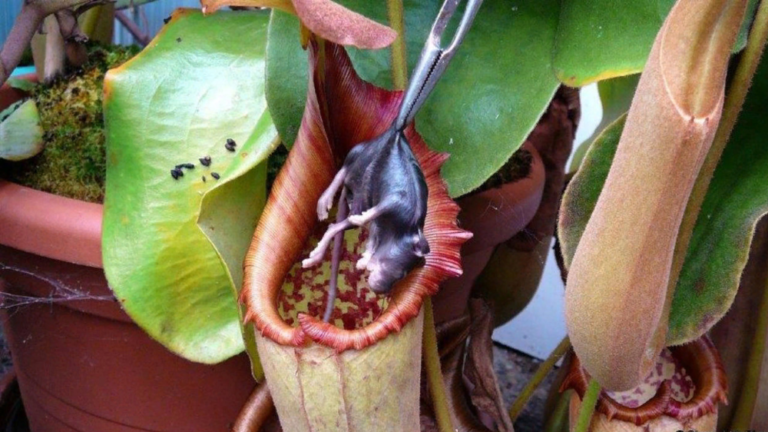Introduction
Nepenthes, generally known as tropical ewer shops or monkey mugs, are a fascinating group of rapacious shops that have captured the interest of botanists and factory suckers worldwide. These unique shops are known for their distinctive ewer- shaped leaves that trap and digest insects. Native to the tropical regions of Southeast Asia, Madagascar, and Australia, Nepenthes parade remarkable diversity and adaption strategies. This composition delves into the biology, ecology, civilization, and conservation of Nepenthes, furnishing a comprehensive overview of these witching shops.
Biology of Nepenthes
Morphology and Structure
Nepenthes are characterized by their modified leaves, which form the iconic ewers. These ewers are technical structures designed to trap and digest prey. The factory’s morphology includes a tendril, which supports the ewer, and a lid that prevents rainwater from lacing the digestive enzymes outside. The innards of the ewer is lined with slippery shells and over- pointing hairs, making it nearly insolvable for trapped insects to escape.
Mechanism of Carnivory
The primary function of the ewer is to attract, trap, and condensation insects and other small organisms. Nepenthes cache quencher around the hem of the ewer to bait prey. Once outside, the prey slips into the liquid at the bottom, where digestive enzymes and bacteria break down the soft apkins, allowing the factory to absorb essential nutrients similar as nitrogen and phosphorus. This rapacious medium allows Nepenthes to thrive in nutrient-poor surroundings.
Ecological Role
Habitat and Distribution
Nepenthes are generally set up in tropical rainforests, frequently growing in nutrient-deficient soils. They’re generally set up in different territories, ranging from tableland timbers to high- altitude montane regions. Their distribution is primarily centered in Southeast Asia, with notable populations in Borneo, Sumatra, and the Philippines.
Interaction with Ecosystem
Nepenthes play a vital part in their ecosystems. By enmeshing and digesting insects, they help control nonentity populations and reclaim nutrients within the terrain. Some species of Nepenthes also have mutualistic connections with creatures. For case, certain tree harpies and batons use the ewers as toilets, furnishing the factory with fresh nutrients from their feces.
Species Diversity
Notable Species
There are over 170 honored species of Nepenthes, each flaunting unique characteristics and acclimations. Notable species include Nepenthes rajah, known for its enormous ewers that can trap small invertebrates, and Nepenthes lowii, which has a symbiotic relationship with tree harpies. Another intriguing species is Nepenthes attenboroughii, named after the notorious naturalist Sir David Attenborough, which is noted for its large and robust ewers.
Hybrids and Cultivars
Nepenthes are also known for their hybridization, both in the wild and through mortal civilization. mongrels frequently display a combination of traits from their parent species, performing in a wide variety of ewer shapes, sizes, and colors. Cultivars, widely bred for desirable traits, are popular among collectors and horticulturists.
Cultivation and Care
Growing Conditions
Cultivating Nepenthes requires replicating their natural tropical niche. They thrive in high moisture, moderate to bright circular light, and well- draining, acidic soil. numerous farmers use a blend of sphagnum moss, perlite, and orchid dinghy to give the ideal growing medium. Maintaining harmonious humidity situations is pivotal, but doused conditions should be avoided to help root spoilage.
Propagation Techniques
Nepenthes can be propagated through seeds, slices, and towel culture. Seed propagation is time- consuming and requires specific conditions for germination. slices are a more common system, where sections of the vine are embedded in a suitable medium. Towel culture, though complex, allows for the mass product of shops with desirable traits.
Conservation Concerns
Threats to Nepenthes
Numerous species of Nepenthes are hovered by niche destruction, primarily due to deforestation and land conversion for husbandry. Illegal collection and trade also pose significant pitfalls, as some species are largely sought after by collectors. Climate change further exacerbates these pitfalls by altering the delicate balance of their native territories.
Conservation Efforts
Conservation Sweats for Nepenthes concentrate on niche preservation, legal protection, and sustainable civilization practices. Botanical auditoriums and conservation associations play a pivotal part inex-situ conservation, maintaining living collections and seed banks. Public mindfulness and education are also essential in promoting the protection of these remarkable shops.
Fascination and Cultural Impact
Nepenthes in Popular Culture
Nepenthes have captured the imagination of people around the world, featuring in colorful forms of media, literature, and art. Their unique appearance and rapacious nature make them subjects of conspiracy and wonder. They’re frequently depicted in pictures, nature programs, and indeed in fictional workshop, emblematizing the fascinating and occasionally mysterious aspects of the natural world.
Educational and Scientific Importance
Nepenthes are precious for scientific exploration, particularly in the fields of botany, ecology, and evolutionary biology. Studying these shops provides perceptivity into factory adaption, nutrient accession, and mutualistic connections. Educational programs and interactive shows in botanical auditoriums and wisdom galleries help raise mindfulness about the ecological significance and conservation requirements of Nepenthes.
Conclusion
Nepenthes, with their extraordinary acclimations and ecological significance, continue to intrigue and inspire scientists, horticulturists, and factory suckers likewise. Understanding their biology, ecological part, and the challenges they face is pivotal for their conservation and appreciation. As we strive to cover these unique shops, we also gain a deeper appreciation for the intricate and connected web of life in our earth’s ecosystems.


